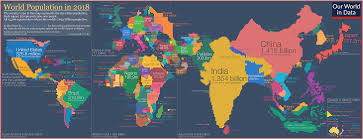Understanding the Current State of the World Population in 2023

The Importance of World Population Data
The world population, which currently exceeds 8 billion people, is a critical metric that reflects the growth, distribution, and dynamics of human life on our planet. Understanding population trends is essential for planning resources, managing sustainable development, and addressing challenges such as climate change, food security, and public health.
Current Statistics and Trends
As of 2023, the United Nations reports that the global population stands at approximately 8.05 billion. This figure indicates a continuous upward trajectory, with certain regions, particularly sub-Saharan Africa and parts of Asia, experiencing the highest growth rates. For instance, population growth within the African continent is expected to double by 2050, showcasing both opportunities and challenges, including job creation and infrastructure needs.
In contrast, several countries in Europe, including Italy and Germany, are witnessing population decline due to low birth rates and aging populations. This demographic shift poses significant challenges for these nations, concerning workforce sustainability and social services.
Implications of Population Growth
The increase in world population raises pressing concerns about resource allocation and environmental sustainability. Governments and organisations are confronted with the task of ensuring that growing populations have access to essentials such as water, food, and energy without exacerbating climate change. Urbanisation is also a significant factor, as an estimated 56% of the global population currently resides in urban areas, with that number projected to rise to 68% by 2050. This rapid urban growth necessitates effective city planning and investment in infrastructure.
Future Projections
Looking ahead, the UN projects that the world population could reach nearly 10 billion by 2050 and approximately 10.9 billion by 2100, subject to varying fertility rates, mortality rates, and international migration patterns. These projections necessitate proactive strategies at global and national levels to manage the effects of population growth on the economy, environment, and social structures.
Conclusion
The current and future state of the world population is of immense importance, with wide-ranging implications for economic development, health, and sustainability. It is crucial for policymakers and communities to consider these dynamics in their planning and decision-making processes as it impacts every aspect of human life. As we navigate this complex challenge, the need for collaborative efforts and sustainable strategies has never been more significant. The emphasis on education, especially for women, and improving public health can play a pivotal role in shaping a resilient and adaptable future for the global population.






